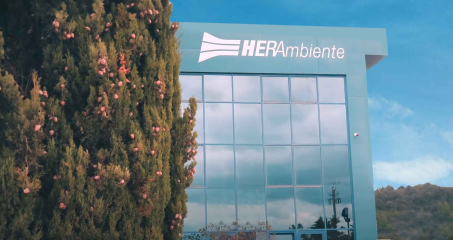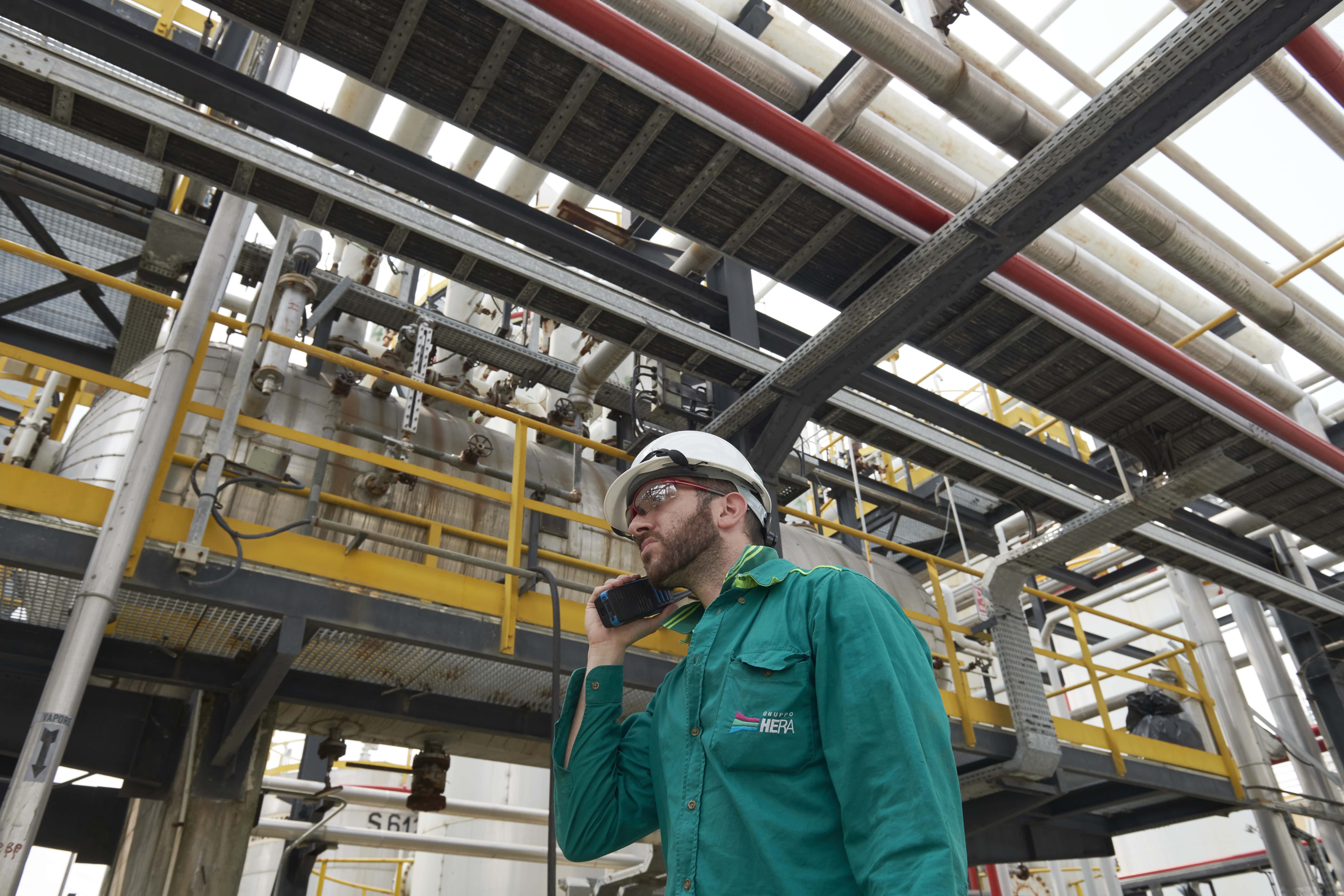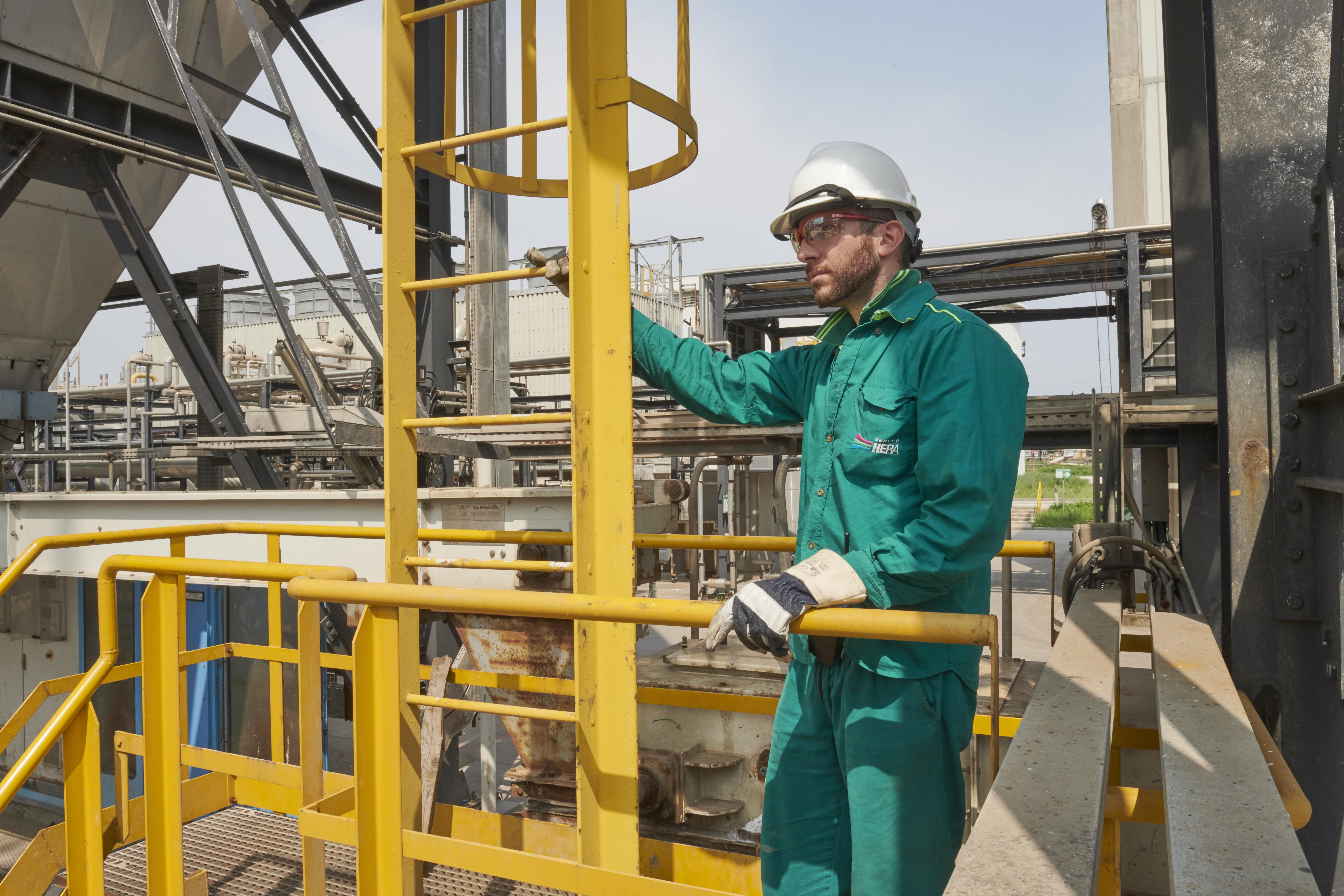Overview
The plant is designed for the combustion of non chlorinated gaseous emissions from the plants of the Chemical Industry District of Ravenna.
The plant was built following the guidelines laid out in the Memorandum of Understanding of 22.04.1997 between the Municipality, the Province and the companies located in the Chemical Industry District of Ravenna. The aim of the project is to reduce the discharge of volatile organic compounds (VOC) into the atmosphere through the incineration of gaseous emissions.
Page update 5 December 2022
Receipt
The gaseous emissions from the neighbouring petrochemical district are collected at the site's battery limit and conveyed to an underhead hydraulic seal.The hydraulic seal has the dual function of collecting any condensate entrainment and preventing flashback to the flare circuit. The emissions flow from the hydraulic seal to the combustion chamber burner via two blowers.
The gaseous emissions from the neighbouring petrochemical district are collected at the site's battery limit and conveyed to an underhead hydraulic seal.The hydraulic seal has the dual function of collecting any condensate entrainment and preventing flashback to the flare circuit. The emissions flow from the hydraulic seal to the combustion chamber burner via two blowers.
The fumes leave the combustion chamber at a temperature varying between 850°C and 1000°C, depending on the operating conditions of the incinerator, and are evacuated through a refractory chimney located at the top of the chamber and connected to it via a connecting cone. The self-supporting chimney is approximately 14 metres long, which ensures that the fumes are released at a height of 30 metres above the ground. On the chimney there are some air intakes to cool the fumes to a temperature varying between 600°C and 750°C.
The gaseous stream produced by combustion, consisting of CO2, H2O and nitrogen, is discharged directly into the atmosphere at a minimum temperature of 600°C.
Gases emitted into the atmosphere are monitored through an Emissions Monitoring System (EMS) in accordance with current regulations and the integrated environmental authorisation. The CO, COT and NOx parameters are continuously analysed. The monitoring plan applied has been approved within the framework of the current integrated environmental authorisation.





